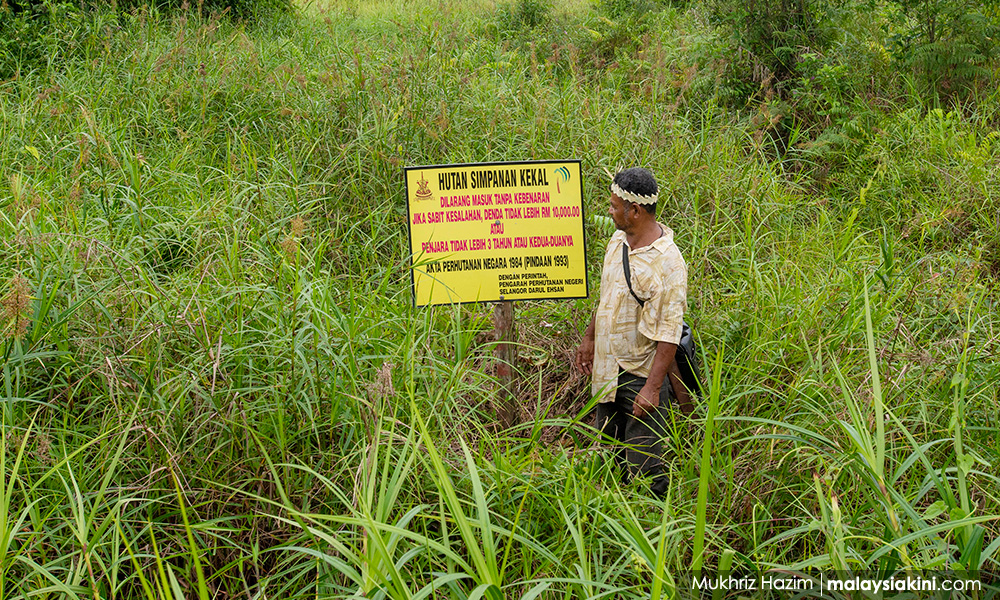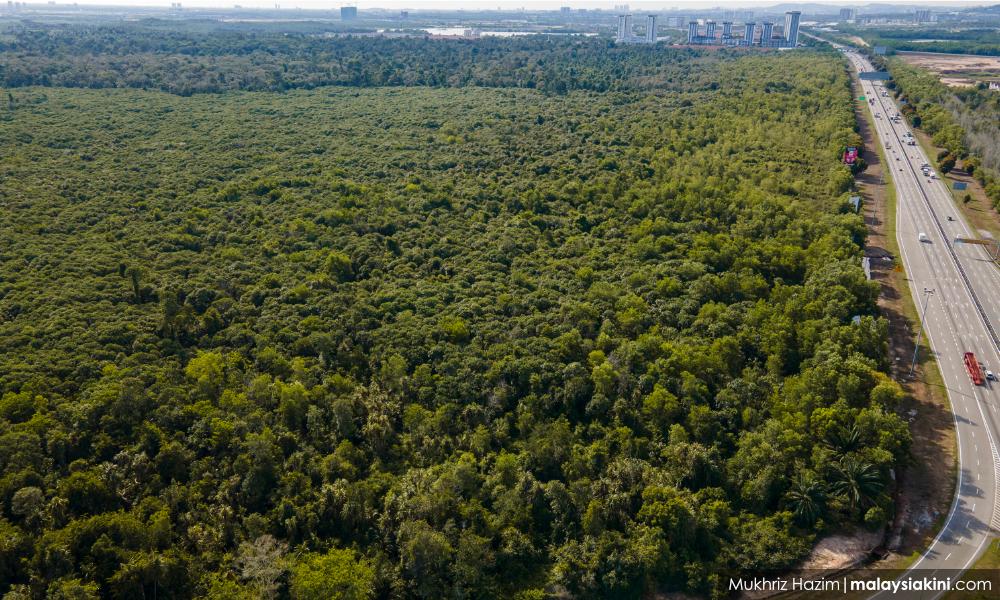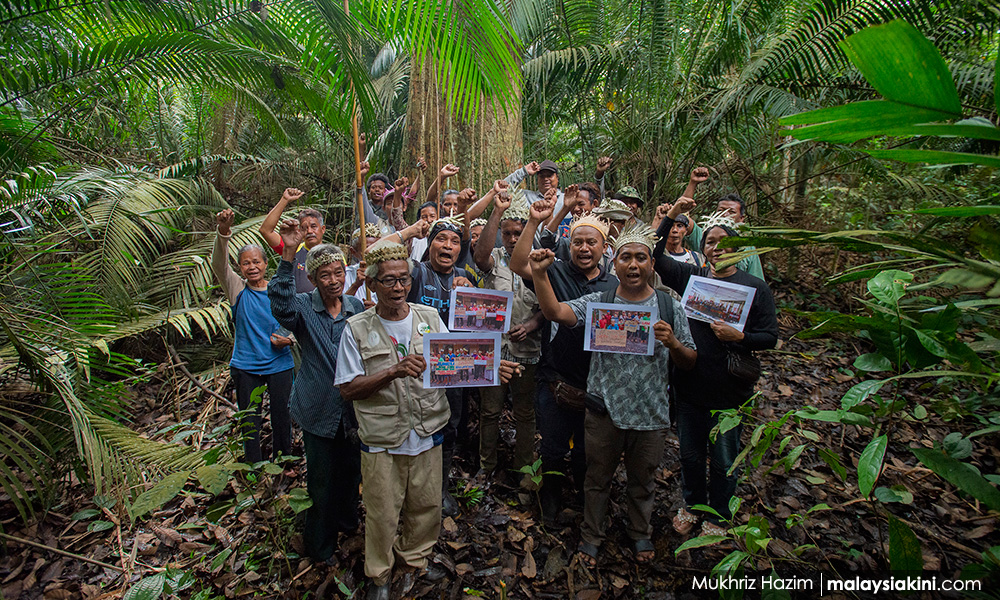I am making this call solely to uphold the rule of law. This is necessary in view of possible breach of not only the Forestry Act but other related environment and development laws in the process of the de-gazettement of the Kuala Langat (North) Forest Reserve (KLNFR).
I am writing this based on my past role in government policy-making for 34 years, in Malaysia and in Asean, having led Malaysia and Asean delegations in negotiations, and coordinated implementation of several UN environmental conventions such as climate change and biodiversity. Hopefully, this will not be dismissed as another voice in the wilderness.
There is the expected surge of protests among the people, civil society and public interest groups, and surprisingly political upheaval within the Selangor ruling coalition itself.
However, I am concerned, based on media reports, these are uncoordinated piecemeal reactions and may easily be dismissed by the powers-that-be amid the mayhem. I try to provide a holistic overview of this impending disaster to help chart an effective coordinated response moving forward.
But first, let me explain why the situation is so dire that I am suggesting a precautionary court injunction immediately. A day lost could be disastrous as the decision-making machinery is moving at breakneck speed to a point where any effort to save KLNFR would be a pyrrhic victory, not to mention the heavy costs and liability to the public, apart from losing the forest reserve itself.
Profit first, environment be damned
Another day and we lose another part of our precious natural heritage. Even though in the last two years the country is locked down with the Covid-19 pandemic, the only business that is thriving is the destruction of our pristine environment.
From north to south, west to east, we hear of approvals for mining of minerals in forests, destruction of watershed areas supplying water to a densely populated urban area, converting forests into toxic dumps, and of course even more logging concessions. But why is this happening, against all norms of basic environmentally sustainable development?
The private business, in essence, exists to make a profit, the more the better. Our elected representatives protect the interest of the general public and regulate private wants. If the executive itself enters into business such as through MOF Inc, MB Inc, government-owned or linked private entities, the equilibrium changes.
They form a formidable destructive force when both collude or even compete, driven by the executive with short tenure, politicians helming GLCs, and a compromised or pliant civil service. This is the klepto-economics I wrote about extensively. It has evolved from raiding the national coffers and impoverishing the public, to raiding our remaining natural heritage.
The Selangor state exco’s decision to excise half of KLNFR in May has to be gouged out by the state assembly on Aug 30. The public recently exposed that the excision was gazetted on Aug 4.
Why was it hastened, knowing the state assembly would meet later that month? We are told, belatedly, the excised KLNFR has been handed over to a one-ringgit company; with the same shareholder and director, a one-person sdn bhd company meaning its liability is limited to the one ringgit.

Looking at this pattern of hide-and-seek, I can only speculate many more commitments could have been made. At least a binding contract would have been signed, with consequences if the contract is rescinded.
Even worse, premium payment may have been received, and a title (hak milik) issued. With such a big piece of land, where a survey has to be done, boundary coordinates measured and marked, a proper valuation done, the process would take more than a year. But it is anybody’s guess if this too has been speeded up.
A title issued is legally indefeasible in court. The only option is for the titleholder to surrender it. Even with just a binding contract, the public are facing millions in compensation and penalty.
The Selangor exco has been secretive, opaque or at best silent when these questions are raised.
That is why I am calling for a court injunction to halt the process, protect what is left, and salvage it through a judicial review eventually. A peat swamp forest cannot be recreated. Keep in mind a judicial review is to protect the government from frivolous suits, and is stacked in favour of the government.
So do we have the necessary legal defence? Please read on and you will be surprised.
National Forestry Act 1984
Section 11(1): The state authority, if satisfied that any land in a permanent reserved forest:
a) is no longer required for the purpose for which was classified under Section 10; and
b) is required for economic use higher than that for which it is being utilised, may excise such land from the permanent forest reserve.
Section 10 classifies various categories of use (consequently protection) from timber production to virgin jungle reserved forest. Section 12 deals with the replacement of land excised from the permanent reserved forest.
It should be noted that both conditions (a) and (b) must be satisfied for excision. Let me deal first with (b) the value of economic use. It has been reported that the premium the state government may receive is about RM300 million.
But what is the value of that forest now? State exco Hee Loy Sian claims the KLNFR is “empty, no tall trees, and degraded by fires”. So based on this assertion, the valuation is zero or even negative considering the cost of rehabilitation. This is pure hogwash.

There are established studies in environmental economics, where for example, mangrove forests of this size are valued conservatively up to RM50 million per year. In an urban setting, this total economic value increases exponentially as highlighted here.
Just calculate the avoided costs of toxic pollution in drinking water that occurs several times a year. The RM300 million can easily be recouped or avoided within a year. Was an economic valuation done to fulfil condition (b)?
Such an independent study should have been done before a decision is made. Similarly, on condition (a), this last remaining forest surrounded by massive development is most critical to be preserved.
Why was its ‘purpose required’ in 1927 when it was gazetted, but not now when it is most needed, with all the surrounding areas built with mixed development? Legally and technically, it can be argued both conditions have not been satisfied for excision.
On the replacement land, I have written earlier why it is not ecologically sensible nor feasible. Reports have emerged that the ecological integrity of the said replacement lands is questionable.
Environmental Quality (EIA) Order 2015
This Order mandates an environmental impact assessment (EIA) for conversion of an area of peat swamp forest for industrial, housing or agriculture use if; (i) covering an area of 20 ha or more but less than 50 ha, and (ii) for an area exceeding 50 ha and would require public hearing and comment.
The excision of 537ha would mean the conversion of peat swamp forest into a mixed development. The EIA should be done before the decision to degazette is made. What happens if after the land is transferred to the developer and the EIA is rejected?
The EIA then essentially becomes a mitigation plan, which is against the intent of the EIA Order. If this decision is not informed by an independent EIA, then the excision can be challenged in court.
Town and Country Planning Act 1976
This Act is a comprehensive and enabling legal instrument for the proper control and regulation of town and country planning in Peninsular Malaysia. It provides for the National Physical Plan and Development Plans (State Structure Plan and Municipal/District Local Plans).
It contains elaborate provisions on the planning, development, public consultation and adoption of these plans with emphasis on green and greening activities. The Act provides that draft plans can be modified or rejected based on public objections.

I understand that the public hearing for KLNFR was done in accordance with the Selangor Public Inquiry Rules and the Forestry Act. However, the forest, being situated in a township, should come under the purview of this Act or supersedes the state/sectoral laws where inconsistent.
The legal implications are whether the process of public consultation and treatment of objections were in accordance with this Act; and that decision fulfils the national physical or development plans.
Finally, the gazettement can be challenged based on public policy as contained in the numerous national environmental policies, strategies and action plans.
In conclusion, let’s not be swayed anymore by the unkept promises of the politicians. We, the public, don’t want KLNFR to be another statistic in the destruction trail of our national heritage.
We have to act before it becomes a fait accompli. The court injunction will also put pressure to follow the law and due legal process. I hope the public interest groups can come together and pursue this legal recourse. - Mkini
RAMAN LETCHUMANAN was director, Environment/Conservation, Ministry of Science, Technology and the Environment (1993-2000), head of Environment/Haze/Disaster Management, Asean Secretariat, Jakarta (2000-2014), and senior fellow at S Rajaratnam School of International Studies (RSIS), Nanyang Technological University, Singapore (2014-2016). He is a subscriber of Malaysiakini. Email: raman.asean@gmail.com.
The views expressed here are those of the author/contributor and do not necessarily represent the views of MMKtT.



No comments:
Post a Comment
Note: Only a member of this blog may post a comment.